Balancing Tradition and Modernity: Navigating Cultural Expectations and Personal Choices
In a world where the past and the present often collide, finding harmony between tradition and modernity is both a challenge and an opportunity. For many, cultural expectations loom large, shaping identities and guiding decisions. Yet, personal choices also beckon, offering the freedom to carve out individual paths. How do we navigate this intricate dance?
*The Weight of Tradition*
Traditions are the roots of our cultural identities, providing a sense of belonging and continuity. They connect us to our heritage and remind us of our ancestors values and practices. For many, traditions dictate significant life eventslike marriage ceremonies, festivals, and rites of passageeach infused with meaning and symbolism.
However, as societies evolve, these customs can sometimes feel restrictive. Younger generations may grapple with expectations that seem out of step with contemporary realities. For instance, in some cultures, the pressure to marry by a certain age or follow prescribed career paths can clash with individual aspirations for exploration and self-discovery.
*The Allure of Modernity*
On the flip side, modernity offers a tantalizing array of choices. With globalization and technology breaking down barriers, individuals are exposed to diverse lifestyles and philosophies. This exposure can inspire a desire to break free from tradition, to prioritize personal happiness over cultural obligations.
Yet, this quest for individuality can lead to tension. Many feel torn between the desire to honor their cultural heritage and the pull of modern values that advocate for self-expression and independence.
*Finding Common Ground*
Navigating this complex landscape requires a thoughtful approach. The key lies in finding a balance that respects both tradition and personal choice. One way to achieve this is through open dialogue within families and communities. Sharing perspectives can foster understanding, allowing individuals to explain their aspirations while also appreciating the significance of traditional practices.
Moreover, its essential to recognize that traditions can evolve. They are not static; they can adapt to fit modern contexts while retaining their core values. For example, a traditional wedding can incorporate contemporary elements that reflect the couples personalities, merging the old with the new.
*Embracing a Dual Identity*
Ultimately, embracing both tradition and modernity can lead to a richer, more nuanced identity. By acknowledging the wisdom of the past while also celebrating the freedom of the present, individuals can create a personal narrative that honors both their roots and their dreams.
In this journey, its vital to remember that the balance between tradition and modernity is not about choosing one over the other; its about weaving together the threads of both to create a tapestry that reflects who we are in an ever-changing world.




